By Jamie Oliver
About 162 species of reptiles can be found in the Wet Tropics. The concentration of endemic species (that are found nowhere else) is greater (18 species) than anywhere else in Australia. Likewise, the Wet Tropics hosts an impressive variety of frogs (amphibians). Out of the 212 species known to Australia nearly 29% can be found in the region[1]. Unfortunately, reptiles and amphibians tend not be as visible to the casual Paluma visitor. Frogs are most active at night during the wet season, while many reptiles seek the shade of logs and rocks when the sun is high. Nevertheless, there are two species of reptiles that are often out and about in gardens and along the roads and open tracks of the village. Two of the frogs listed here are best found by going out with a torch at night and listening first for their distinctive calls. With luck you may be able to trace the call to its origin and be rewarded with a view of the frog itself. The third frog can be found along the H-Track using a torch to look for eye shine on warm, wet, summer nights
[1] https://www.wettropics.gov.au/plants-animals
1. Red-bellied Black Snake (Pseudechis porphyriacus)
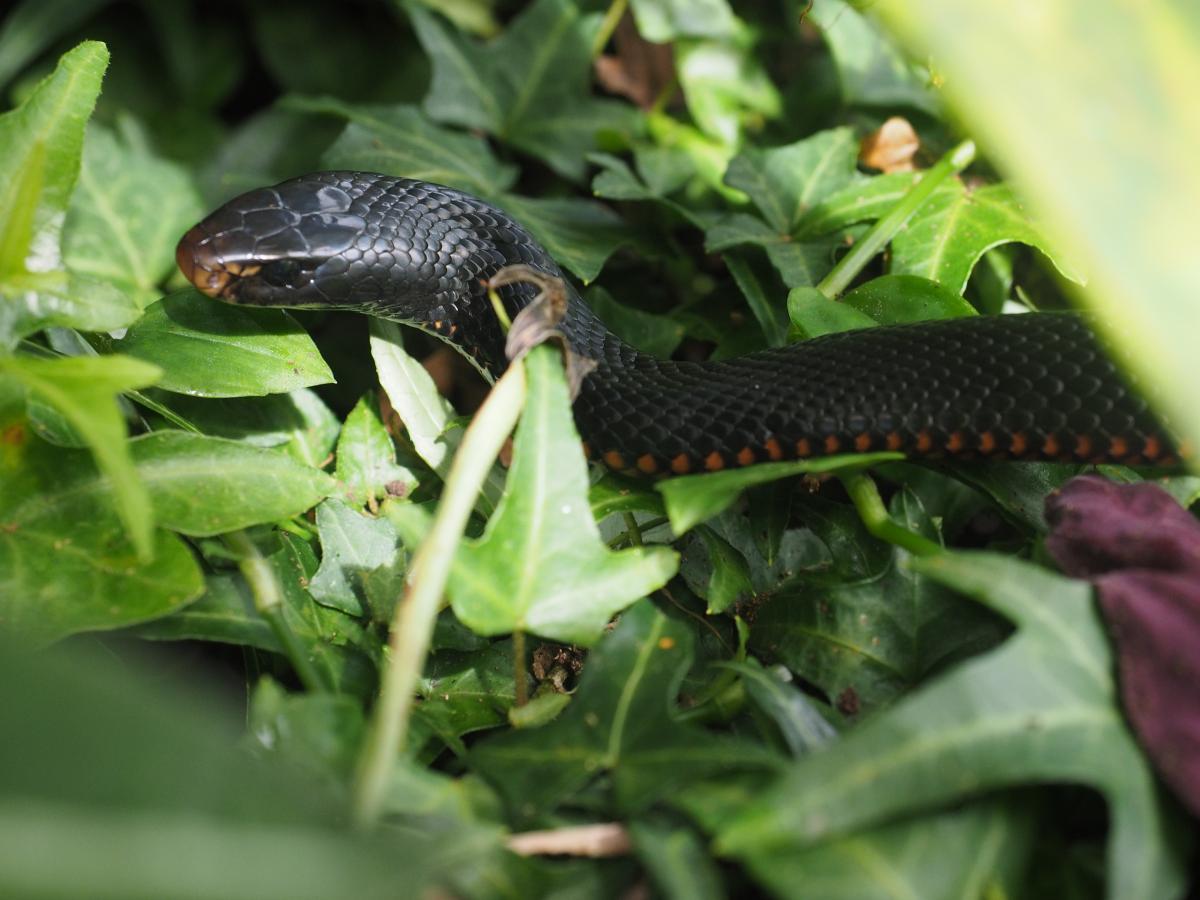
This is the most commonly seen snake around Paluma village, and can often be found sunning itself on a rock in gardens and along the road. They hibernate during the winter but can be found most other times of the year. They are relatively thick bodied and a uniform dull black above and pale below with a series of red blotches long the side.
Although it belongs to the venomous elapid family, for its size the Red-Bellied Black Snake is probably the least dangerous elapid snake in Australia. Despite the number of bites received every year, very few human deaths have resulted. You should still be very cautious when encountering this snake. Keep your distance and stamp your feet to encourage it to move away.
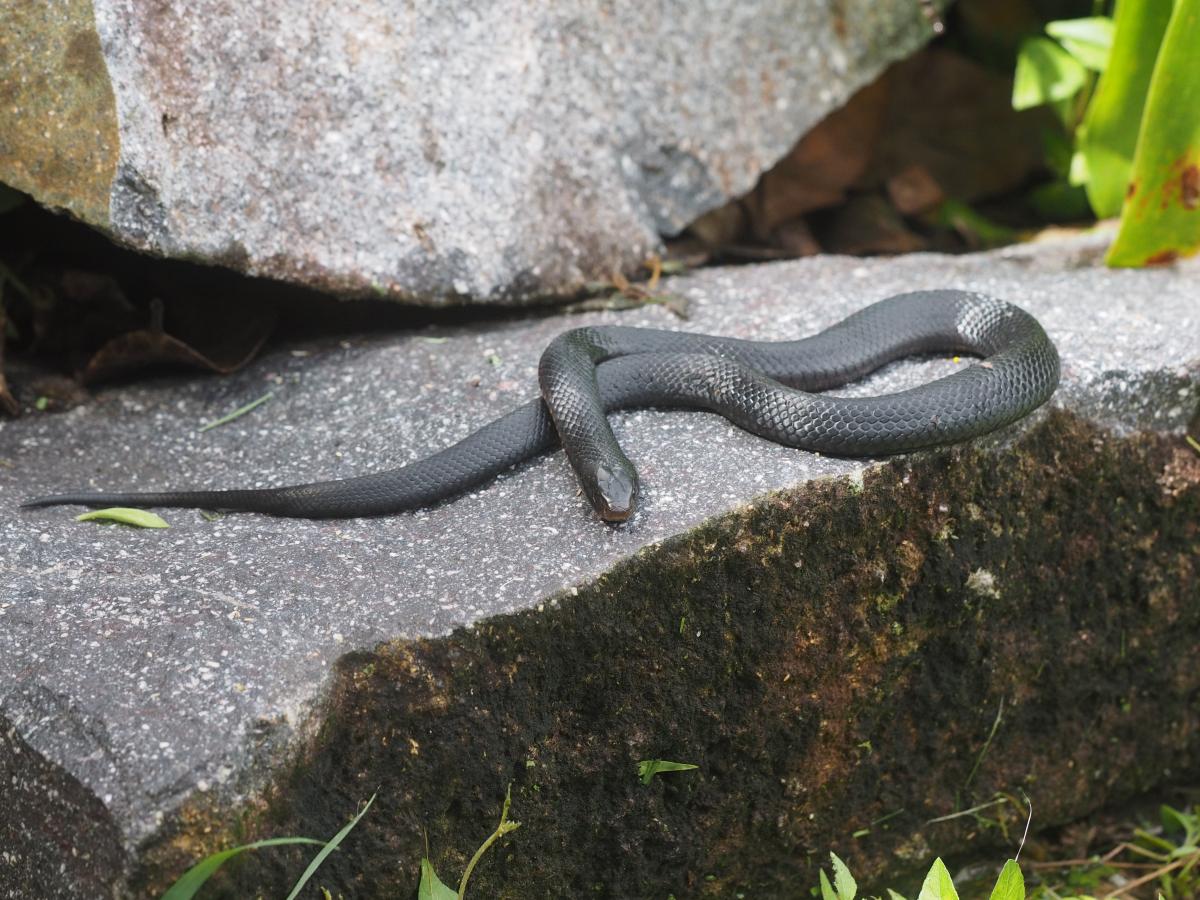
Red-bellied Black Snakes are the only species in the genus Pseudechis that have live young (the other species are all egg-layers). They feed on a variety of vertebrates including fish, tadpoles, frogs, lizards, snakes (including its own species), and mammals.
For a more detailed account of the Red-bellied Black Snake and it’s habits see the post by Colwyn Campbell. Addition notes and observations by Linda Venn were also presented in a recent post here.
2. Eastern Water Skink (Eulampris quoyii)

Skinks are small, smooth-bodied lizards, with most species having no defined neck. They are the most common type of lizard seen around gardens throughout Australia and there are about 389 different species. The Eastern Water Skink is a large species (28cm long) that can often be seen and heard rustling in the leaf litter in search of small prey.
They shelter in holes and burrows, under logs and rocks, and near streams and ponds feeding on a diet of water beetles and other aquatic insects, snails, tadpoles, spiders, small fishes, smaller lizards, and native fruit. They can become quite tame and will quickly learn to eat small bugs and meal worms out of your hand. Birds, big lizards, and black snakes all prey on these skinks. Eastern Water Skinks breed in spring and as many as nine live babies are born in summer.
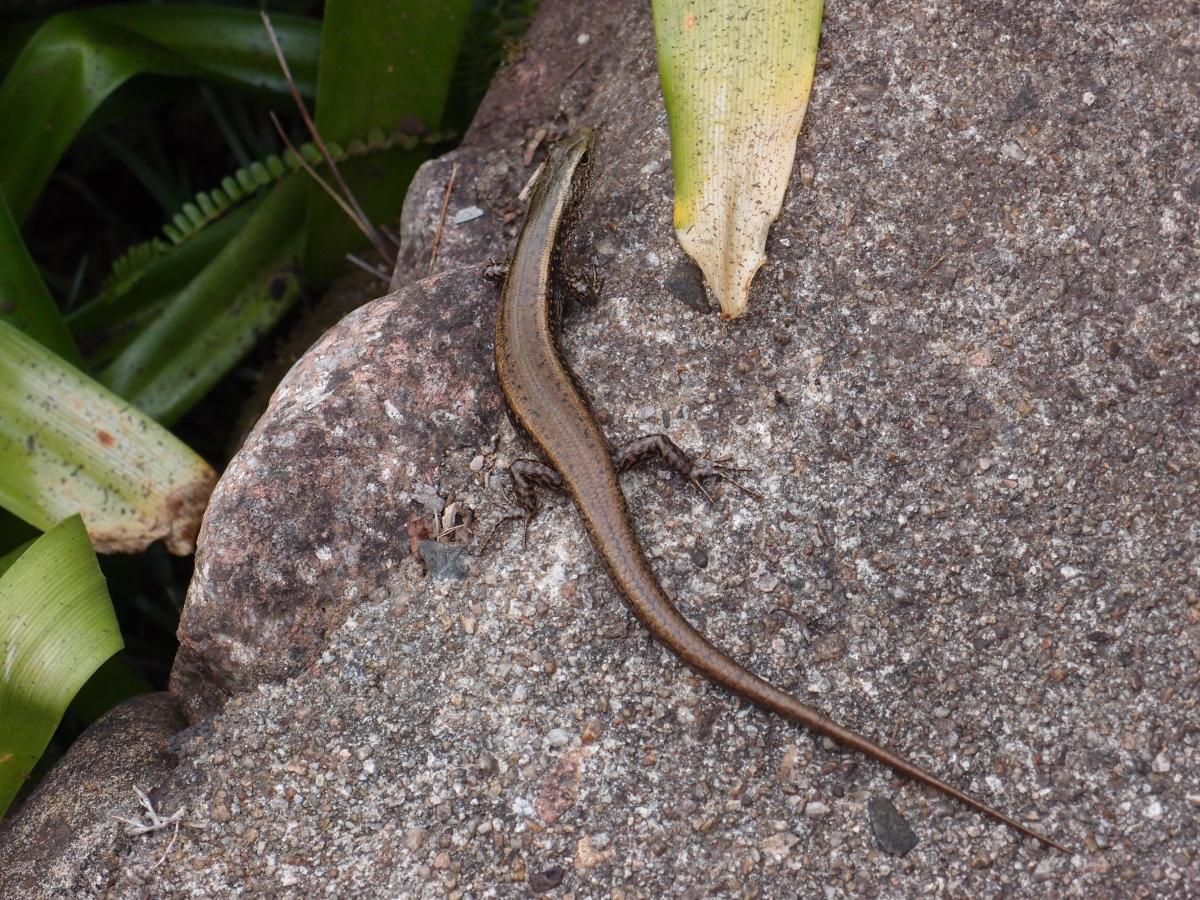
Further notes and observations on the Eastern Water Skink by Linda Venn can be found here
3. Orange-thighed Tree Frog (Litoria xanthomera)
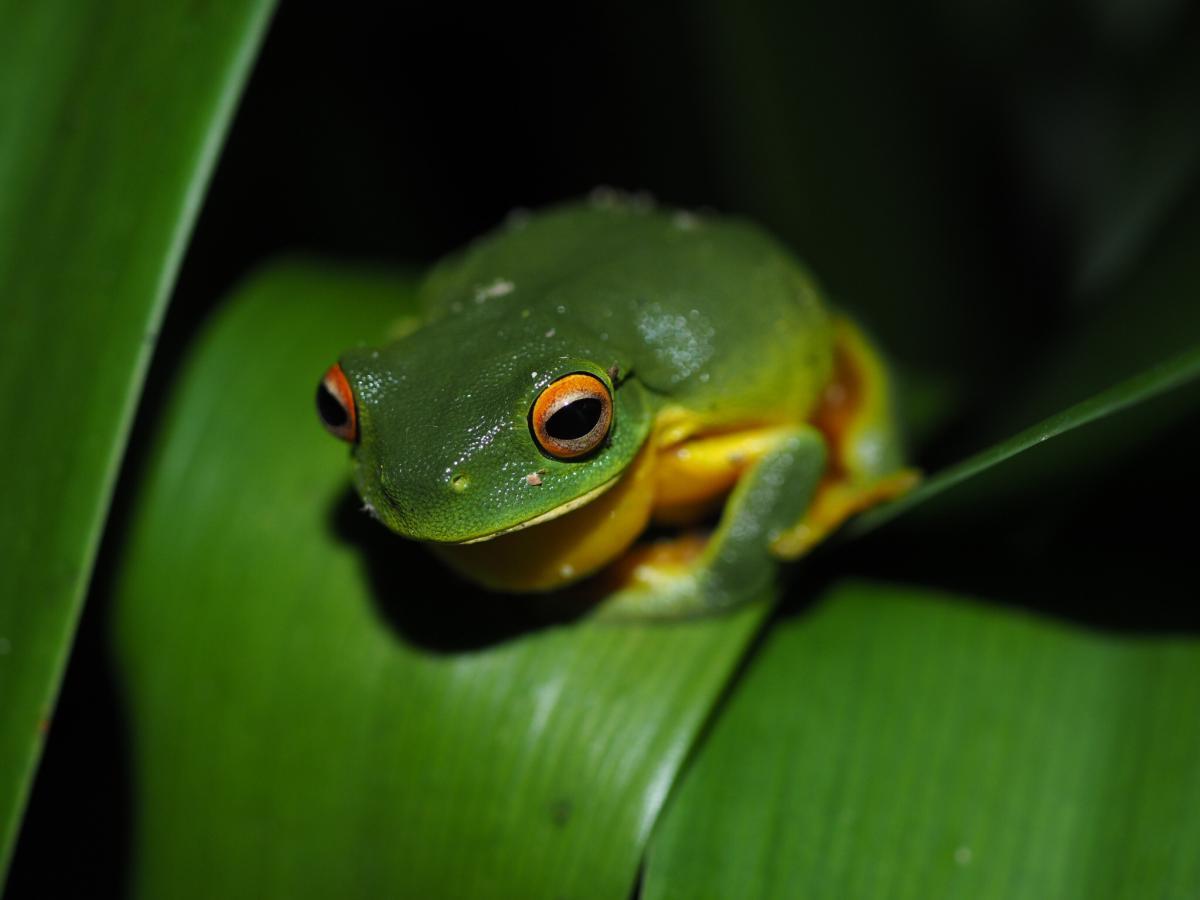
This frog is arguably the most photogenic in tropical Australia, with a deep green upper surface, deep red-orange eyes, and lemony-orange sides to its legs and toes. It is quite common in Paluma and during rainy nights it can often be heard calling near garden ponds and gutters around the village.

Its call is very distinctive, and you are more likely to hear this species than see it. However, if you are able to trace the calls, you should be able to find a male perched on a leaf or twig near a pool or puddle. Watching a male inflate its yellow throat as it calls is a great reward for diligent searching.
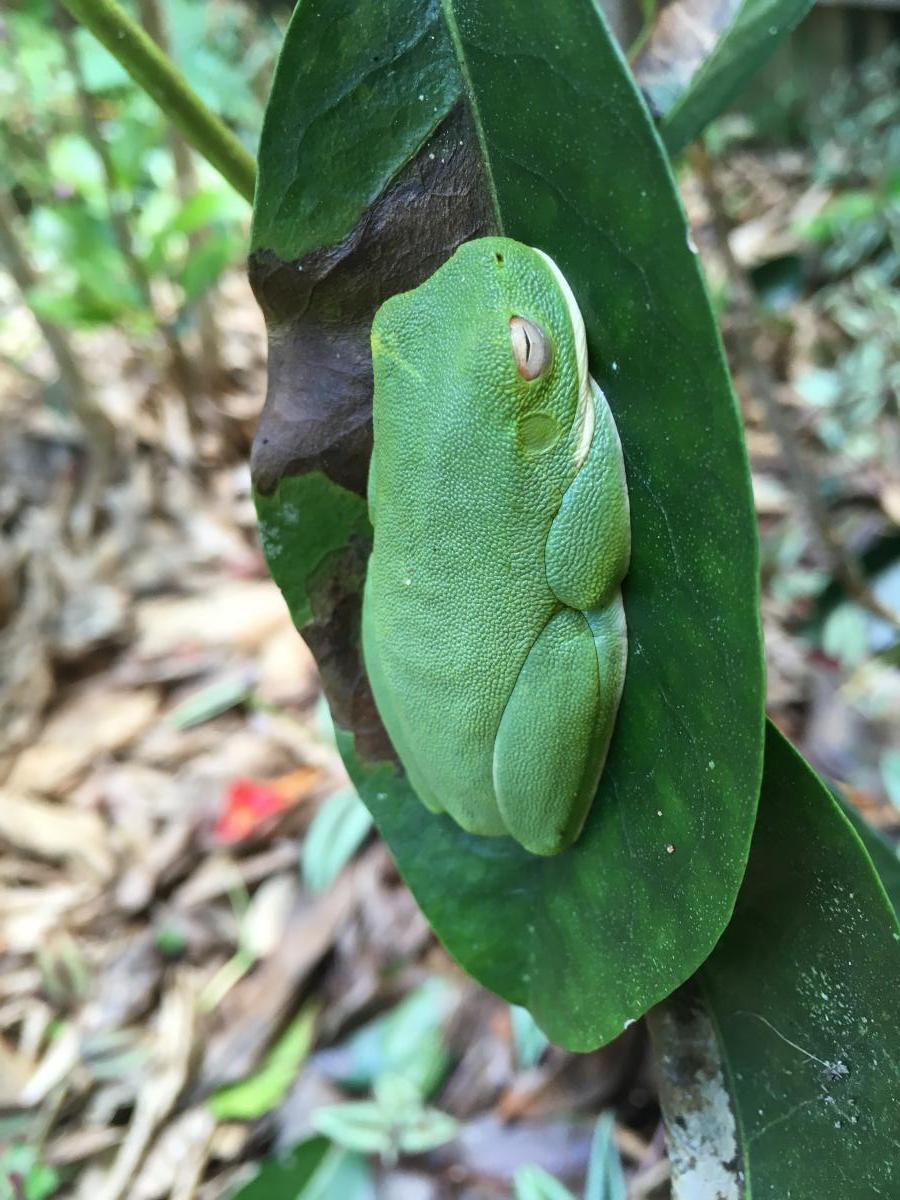
During the day these frogs hide in the foliage and can have very different pale green and white skin and whitish eye colour.
4. Mottled Barred Frog (Mixophyes coggeri)
This large mottled frog can frequently be found beside the road on Lennox Cr. and along the H-Track at night during the wet season. They can be picked up from their eye-shine using a torch and tend not to move when approached, so it is easy to get close enough for a clear identification.
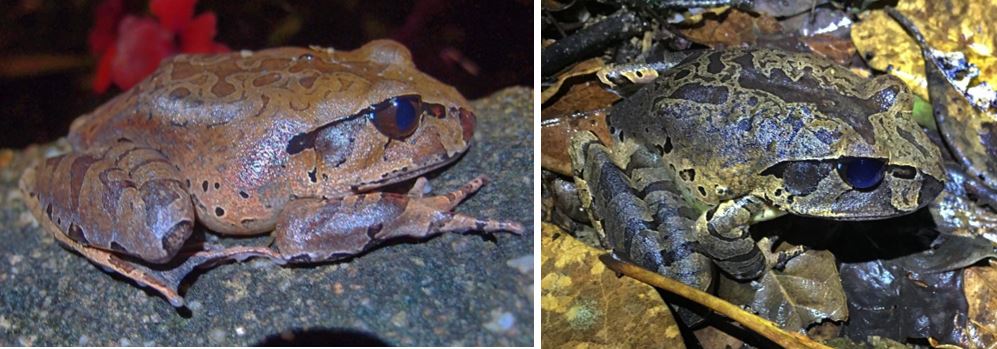
They are also found (and heard at night) around the Village Weir. The call is a loud croak that can be heard at some distance.
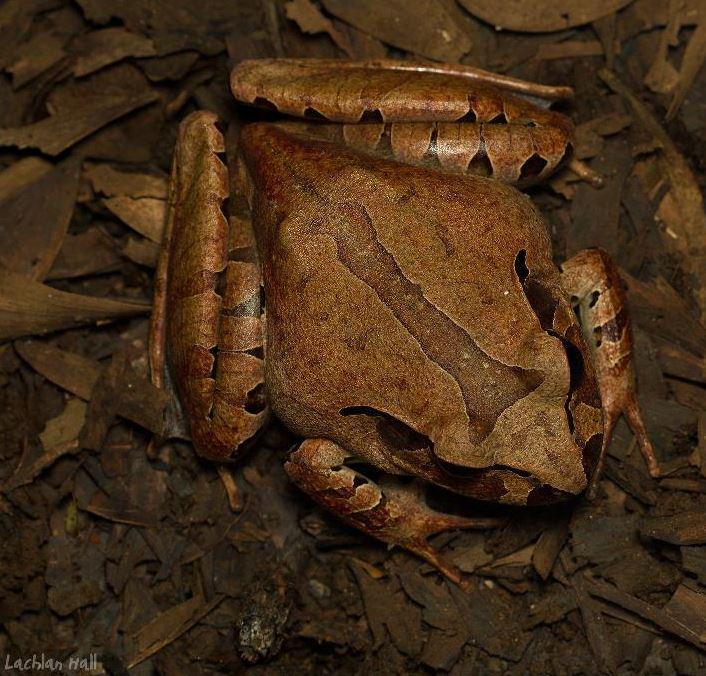
There is one other species of mottled frog (Northern Barred Frog – Mixophyes schevilli) that can be found around Paluma that looks very similar but has a distinct continuous stripe down its back, whereas M. coggeri has an irregular and discontinuous series of dark blotches.
5. Southern Ornate Nursery Frog (Cophixalus australis)
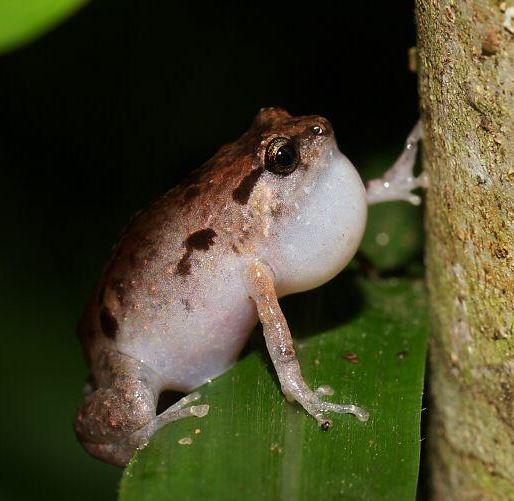
This tiny frog has an amazingly loud call that is so common in the evenings at Paluma that it becomes part of the background soundscape. It hides out in the foliage and on the forest floor and is seldom seen. Even tracking down a calling male can be a frustrating and often futile exercise. However, the call itself is so distinctive that you can confidently claim you have identified one just by hearing it.
There are 13 species of nursery frogs in the Wet Tropics and many of them have highly restricted distributions with some occupying only a single mountain top forest. Consequently, Nursery Frogs are considered to be one of the most threatened groups of vertebrates in the Wet Tropics bioregion. However, the Southern Ornate Nursery Frog has a much wider distribution and is not considered threatened.
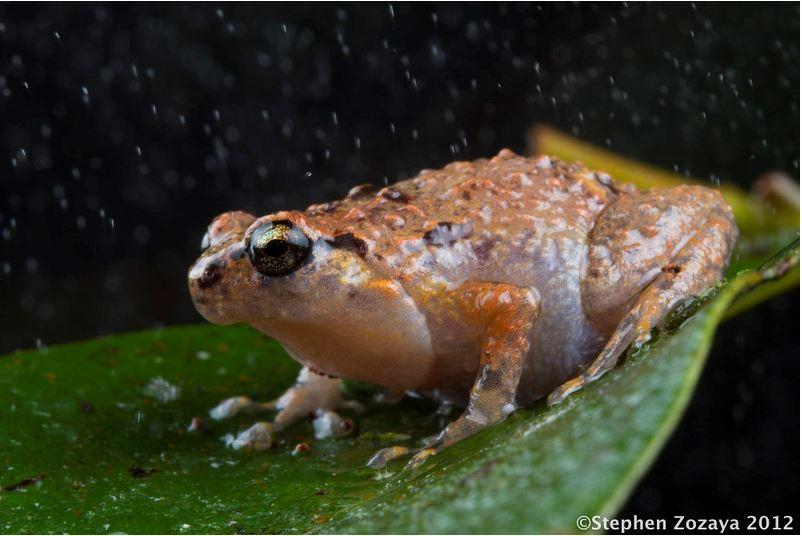
Nursery Frogs have direct development (eggs are deposited under rocks or logs in moist soil and the froglets hatch directly from the eggs). The male has been known to guard the eggs during development – hence the common name.

Loved this post! Makes me miss the Paluma landscape, hearing those lovely frog calls. I’ve had an Eastern Water Skink approach me from a couple meters away and eventually, after some cautious looks, bite my big toe when I was sitting quietly in the garden at Lennox crescent. Perhaps it wanted to check I wasn’t some extra-large meal worm….it was disappointed and hurried off, leaving me quite amused.
Jamie, another fantastic post in your series of ‘5 Easy Species’. I am enjoying these contributions because I am learning more about species I am familiar with and learning new information about species I didn’t know! I especially enjoyed the frog calls in this most recent post, realising these calls were familiar to me from my garden and surrounds. I played the three frog calls at the same time for an interesting ‘symphony’ which made me dream of the wet season.